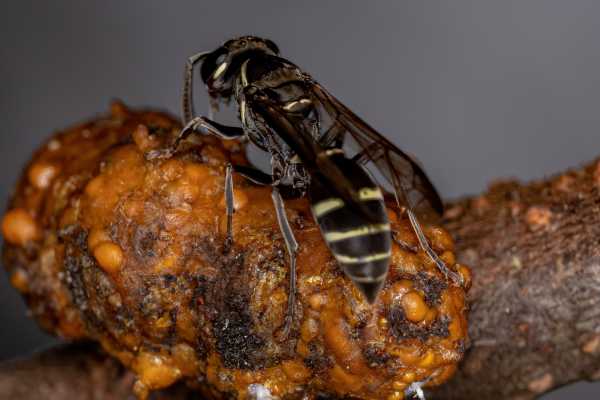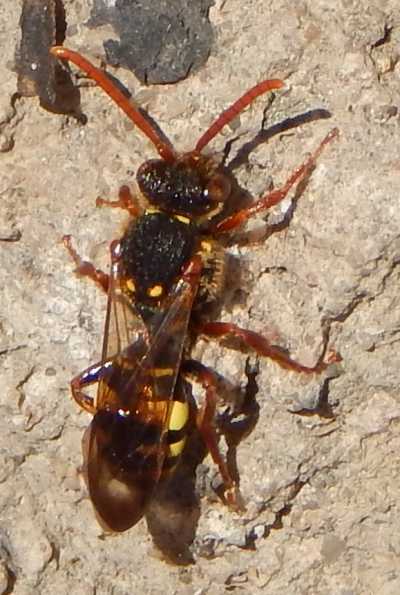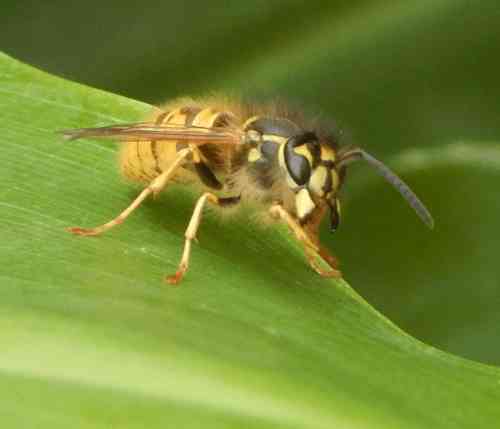How Do Wasps Make Nests? Plus -
Look Inside A Wasp Nest
Have you ever seen an aerial wasp nest in a tree, or hanging from the roof of a garden shed, and wondered how wasps make their nests? Or perhaps you have simply wished you could take a look inside a wasp nest?
I was delighted to receive a lovely piece of video footage, plus several photos from Kathleen in Co. Antrim, Northern Ireland, that beautifully capture the process, as a very industrious wasp queen painstakingly fashions her nest.
The nest is being constructed in Kathleen's shed, where it is attached to the ceiling. My thanks to Kathleen!
How Wasps Make Their Nests
On my page about the structure of a social wasp nest, I explain how a wasp queen collects tiny slithers of wood which she chews and sticks together, to begin forming the hexagonal cells, walls and 'gangways' that will form the nest her offspring (worker wasps) will later complete.
Below, you can see that the queen wasp has begun this process by adhering a small amount of chewed up wood pulp to the ceiling.
Looking at the photographs below, it appears (from the small amounts of grey, papery substance 'glued' to the ceiling), that the queen may have made several attempts at a start of a wasp nest before she finally settled on her chosen spot.
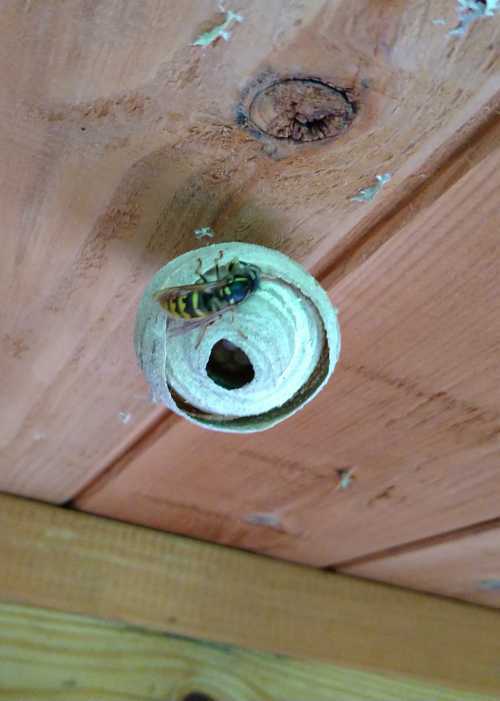
Watch this video of the queen busily forming a neat, papery layer as she regurgitates masticated wood shavings from her mouth.
Inside the wasp nest
Kathleen sent me several superb photos to share with visitors. Some of them reveal a clear view of the beautiful hexagonal larval cells.
I loved Kathleen's comment that the mathematical perfection of it made her think of organic chemistry, and the Giant's Causeway (basalt formations along the North coast of Ireland and West coast of Scotland formed by molten lava).
As the queen constructs each hexagonal cell, she lays an egg inside, which will then hatch into a larva that will look like a small, white grub.
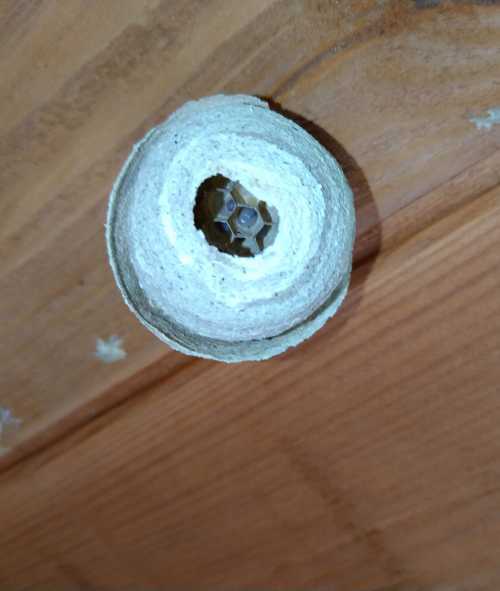
After around 15 days, each larva in its cell spins a silken 'cap' over the cell, and then pupates.
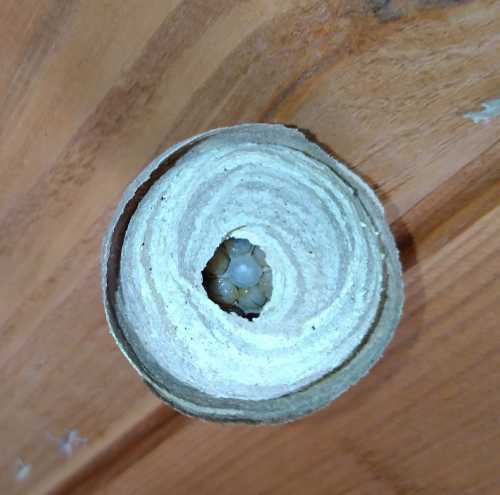
Eventually, the adult wasps will emerge. The new adults will then take over the duties of constructing the nest and feeding larvae, whilst the queen keeps herself busy laying eggs until eventually it is time to rear males and new queens.
Below, three lovely photographs of different views of the nest, still in its early stages.
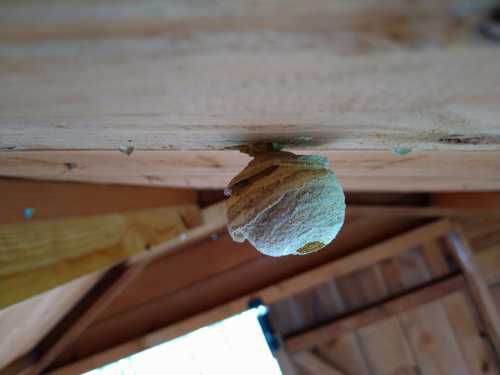
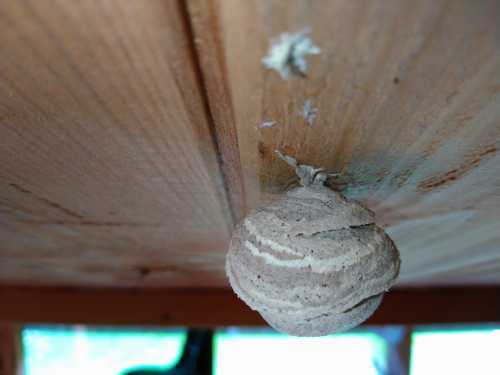
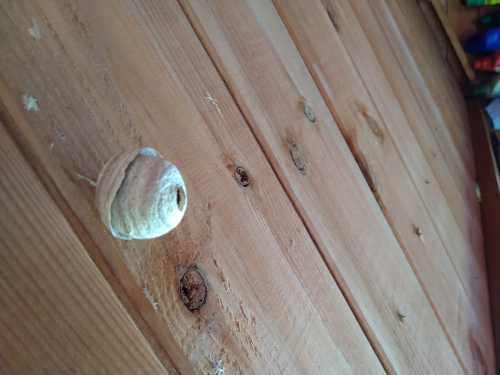
The colony will develop, but will only last a season. The new queens will, however, survive until the following year, overwintering as adults in shelters they may find in natural crevices, or human-made structures.
Other types of wasp nest
Not all wasps create nests for rearing their offspring in the way seen above.
In fact, some was species do not create nests at all, and in particular, gall wasps cause plants and trees to form galls around their eggs. You can read more about this on my page about gall wasps.
If you found this page helpful or interesting, I'd really be grateful if you would share it with others - if not this page, perhaps another, such as Gardening For Bees.
Thank you so much :) .
